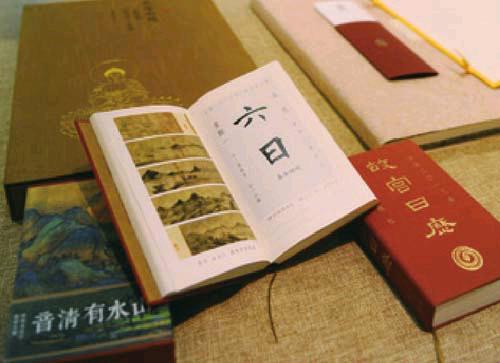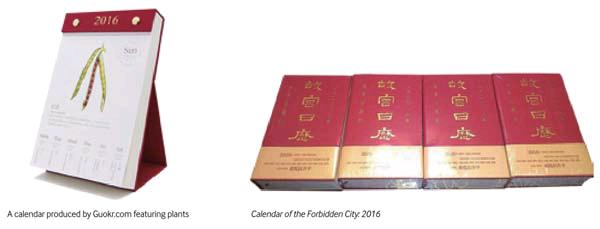Undated Elegance
2016-03-15ByZhengYang
By+Zheng+Yang
A big fan of digital technology, Wang Fan has been living a paper-free life for several years. Like his urbanized peers, the 27-year-old likes to schedule his life and work with a variety of apps on his smartphone.
But when 2015 drew to a close, Wang found himself among a crowd that was snapping up an old-fashioned calendar.
More than a calendar
The Calendar of the Forbidden City: 2016 is no mere calendar. It is a collectors item. After hitting the market in November 2015, it soon jumped to the bestsellers list of many bookstores and online markets.
“Its definitely not for the calendar part, because my phone is more convenient,” Wang said. “Its about a nostalgic sentiment, about culture and aesthetics. Thats something your phone can never provide.”
It could be one explanation for the “cultural calendar” fever. The delicate cultural calendars combine the functions of the calendar with informative content, usually themed on an aspect of Chinese culture and works of art. Their price is double or three times that of ordinary calendars, ranging from 60 to 200 yuan ($9-30).
Among the most sought-after cultural calendars is the Calendar of the Forbidden City compiled by the Forbidden City Publishing House owned by the Palace Museum, which is home to 1.8 million cultural artifacts.
Each page of the calendar presents a work of art selected from over 380 items in the collection of the Palace Museum in Beijing, also known as the Forbidden City, the imperial palace of the Ming (1368-1644) and Qing (1644-1911) dynasties, as well as other renowned museums at home and abroad. They include the Shaanxi History Museum in northwest China, the National Museum of China, the Chicago Gallery of Fine Art and University of Pennsylvanias Penn Museum.
To bring home the “red block,” netizensname for the calendar because of its traditional red hard cover, the buyer will need to shell out 66 yuan ($10) and lots of patience. There was a presale before the official release and the calendar sold out like hot cakes.
“It took me a week to get it, but I knew it was worth the wait when I saw it,” said Zhang Feifei, a 31-year-old who bought two copies, one for a friend and one for herself. “The design looks classic, more like a work of art than a calendar.”
Many proud buyers posted photographs of their coveted calendar on Weibo, a Chinese social media network, and praised it lavishly.
Until late January, according to the publisher, about 280,000 copies of the calendar were sold through bookstores and online markets. On JD.com, one of the biggest online markets in China, it has remained a bestseller among art books.
The first Forbidden City calendar dates back to 1932. It was published for five consecutive years before the project came to an end in 1937. The calendar was popular with the literati of that time.
In 2010, it was re-launched by the Forbidden City Publishing House and immediately garnered attention. This year, as buyers were snapping up copies of the 2016 calendar, the price of the 2010 calendar, now a collectible, shot up to 2,000 yuan ($304), 30 times its original price, in the second-hand book market.
A new trend
The popularity of the Forbidden City calendar has given rise to a new booming niche market. More and more publishers have seen the growing trend and are vying to get a slice of the pie.
The Zhonghua Book Co., for example, has begun to produce a calendar themed on A Dream of Red Mansions, the Chinese literary masterpiece written in the 18th century, since 2014. The 2016 calendar published in November 2015 contains more than 100 poems from the novel and their interpretation, as well as over 100 ancient Chinese paintings and calligraphy samples. The first print order was for 50,000 copies, which sold out in less than two months. In the companys online poll, the calendar was voted one of the top 10 books of 2015.
“We have been pressing the printer for additional copies but its impossible to force the pace because the calendar has to be bound by hand,” said Zhu Zhenhua, a representative of the publisher.
Another product from Zhonghua, a calendar called The Beauty of Chinese Characters, provides information on the Chinese characters used for writing, their origin, and the evolution of Chinese chirography. It too has been a resounding success.
As the market keeps growing, organizations other than traditional publishers have been testing the waters, and adding more variety.
For example, this year Guokr.com, a popular social networking website for science and technology education, has produced a calendar devoted to plants. Each page contains a picture of a plant and a brief introduction.
